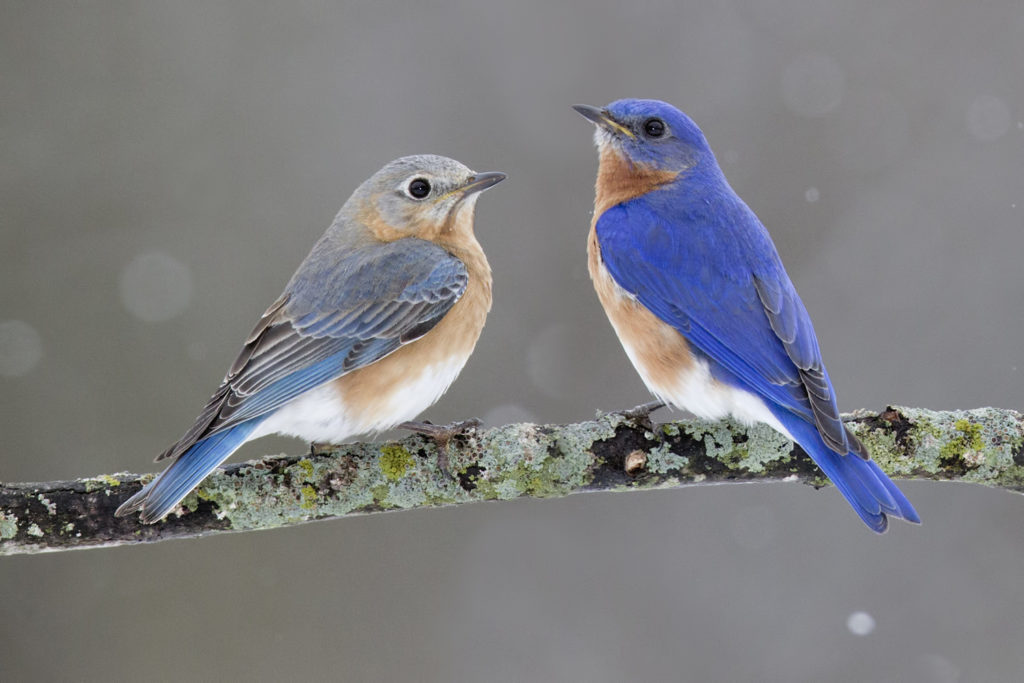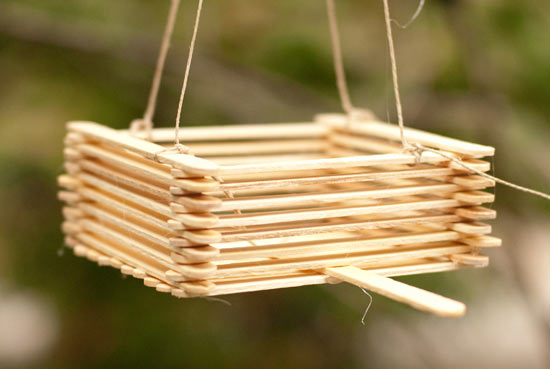Birding FAQs
Will birds’ feet stick to metal perches in the winter?
No. Birds have no sweat glands in their feet so there is no moisture to freeze onto the metal surface.
Why aren’t the birds eating?
There could be several reasons why your visiting birds are not eating.
- Replace the seed and clean the feeder. The high oil content in many seeds and mixes can become rancid. Make sure the store from which you purchase your food keeps fresh inventory.
- Check your seed mixture. It may be the wrong mix for the birds you want to attract.
- Make sure you have the correct feeder.
- Make sure the feeder’s holes are open and not clogged. Many inexpensive wild bird food products contain high levels of sticks and other debris that will clog holes and ports.
Why aren’t birds coming to my feeder?
There could be various reasons why birds are not coming to your feeder.
- Make sure you are using the right seed mix for the birds in your area.
- Make sure the seed is fresh.
- Make sure you have the correct feeder. For example, it is difficult for cardinals to come to a tube feeder.
- Make sure there are no cats or dogs close to your feeder.
- Make sure there are no birds of prey (hawks, owls, eagles, etc.) nesting or roosting close by.
- Make sure your feeder is close to natural cover (trees and shrubs).
- TIP: Tie a small piece of tinfoil to your feeder so it glints in the sun. The birds will have an easier time finding your feeder.
How do I clean feeders?
Thoroughly wash with soap and warm water. Sterilize with a solution of one part bleach to four parts water. Rinse thoroughly.
How do I stop attracting starlings and grackles?
Use wild bird seeds that these birds do not like. Foods with corn and milo will attract these birds.
Why do I see sparrows?
Many people like to feed sparrows, while others prefer not to. To avoid sparrows visiting frequently, use foods that do not contain mullet, milo or corn.
Will suet get rancid in the summer?
Newly formulated suet and suet dough products will not melt under normal conditions or go rancid. Read the label carefully.
When should I feed the birds?
It is best to provide food sources all year long. February through August, birds are nesting and need extra food for breeding and rearing baby birds. September through March are difficult months for birds, as many natural sources of feed disappear in the winter months.
When should I provide water?
Clean, fresh water should be made available at all times. During the summer, drinking and bathing are important for birds. In the winter months, in many areas, natural water sources freeze.
Should I provide constant food?
Keep feeders full at all times. Without a constant food source birds will leave.
How much do birds eat?
Birds have a high metabolic rate and an average body temperature of 100 degrees (F). They need to eat constantly to store up energy for the winter months and to burn off excess heat during the summer months. Birds will eat their own body weight daily.
Do I need trees, shrubs and flowers to attract birds?
Birds prefer to live and eat in areas where cover in trees and shrubs is readily available.
What do I do about squirrels?
No matter what you do squirrels will find your feeders. Make sure you supply squirrels with food they prefer (Wild Delight Squirrel food, corn on the cob or peanuts) somewhere away from your bird feeders. If you purchase inexpensive plastic bird feeders, the squirrels will damage or destroy them. Use well-made feeders with metal bindings and squirrel-proof guarantees.
What about moths and insects in my bird seed?
Seed is a natural product. Often, various types of insects and meal moths are present in seeds. These are harmless natural creatures and many birds thrive on these insects. To avoid this problem, buy seed in smaller quantities or packages that is used quicker. Also, make sure your supplier is keeping seed fresh and that you don’t see insects or moths in the store. You can also freeze your wild bird food to eliminate the problem.
Why do birds come to my feeder, take a seed or two and fly away?
Some birds, like jays and nuthatches, take a seeds or two and then fly to a perch to crack open the hull. They will then hide these seeds in trees and other places for later use.
Why is all the seed on the ground?
Many birds do not like certain seeds and grains used in lesser-quality mixes. They will “throw” this unwanted seed out while searching for more desirable seeds and grains. The higher the content of millet, milo, corn, wheat, oats etc., the more uneaten seed you will see on the ground.
Why did my goldfinches disappear?
These beautiful yellow birds change color in their home range and also migrate. During the breeding season, the males’ feathers change to a bright yellow either at home or as they migrate.
Why are weeds growing under my feeders?
When seeds are “thrown” out of feeders, many will sprout. The solution is to use outdoor pet foods that contain more of what the birds want to eat so less ends up on the ground.
Why is my “no-waste” product not working?
Many so-called “no-waste” or “waste-free” products are simply made with hulled seeds and grains that birds don’t like. The birds “throw” those seeds and grains out and so the products are in fact wasted. A true “no-waste” product should contain only desirable ingredients, such as sunflower hearts or chips, nuts, nut meats and fruit.




